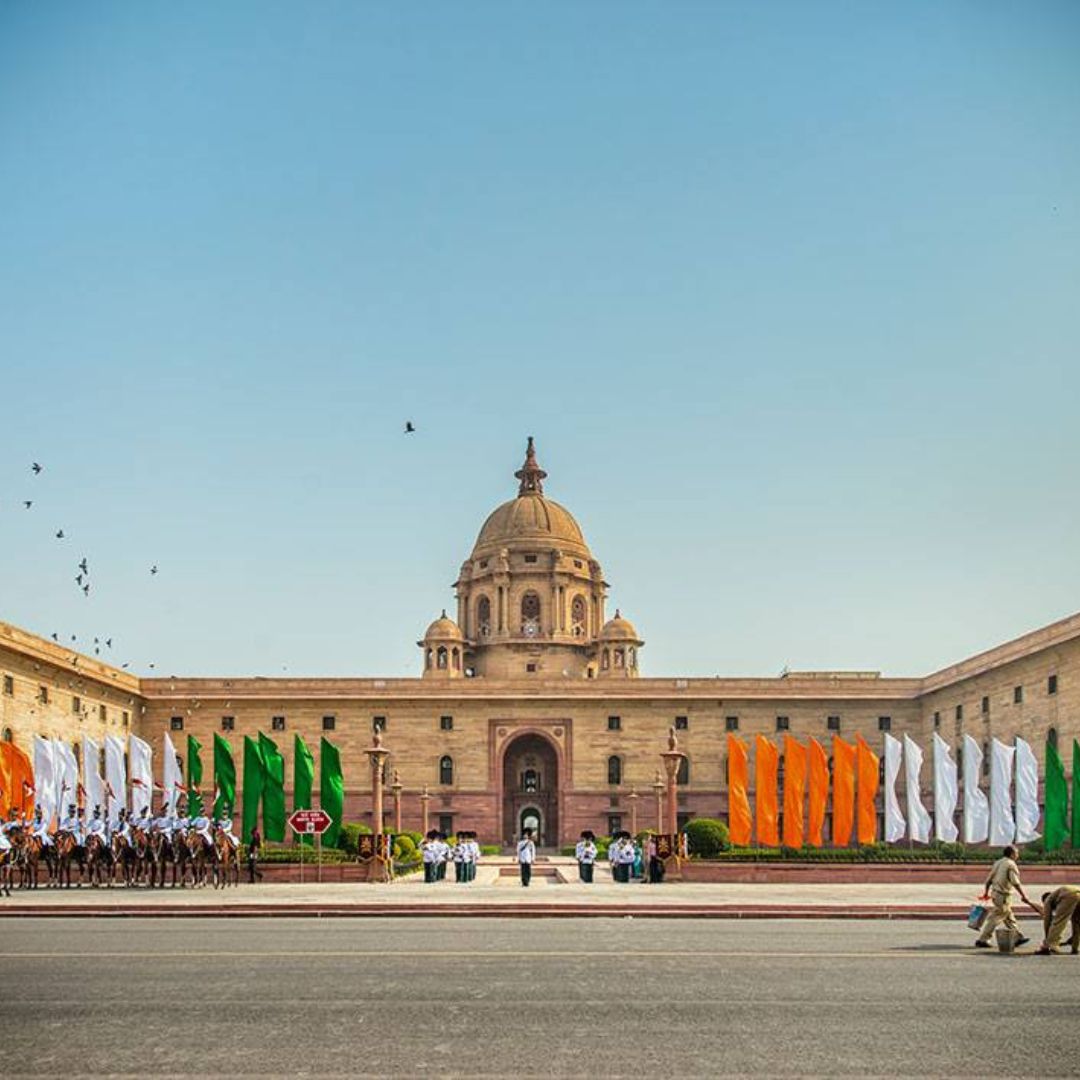Who Drafted the Constitution of India?
The Indian Constitution was drafted by an assembly of elected members collectively called the Constituent Assembly. The election to the Constit-ent Assembly was held in July 1946 and its first meeting was held on December 9, 1946. The members of the Constituent Assembly were mainly elected by the members of the then existing Provincial Legislatures. The Constituent Assembly had 299 members that wrote the Constitution.

Also read full article on, India’s Republic Day: History And Celebrations
Dr. Rajendra Prasad was appointed as the first President of the Constituent Assembly in December 1946.
The Drafting Committee
The Constituent Assembly established a Drafting Committee on August 29, 1947, under the chairmanship of Dr. B.R. Ambedkar, to come up with a draft Constitution for India for discussion. The members discussed and debated the draft Constitution for 114 days spread over three years. On February 21, 1948, the Drafting Committee submitted the draft Constitu-tion, as settled by it, to the President of the Constituent Assembly.

(Sitting from left) N. Madhava Rao; Sayid Muhammad Saadulla; B.R. Ambedkar; Alladi Krishnaswami Ayyar and B.N. Rao.
Standing from left) S.N. Mukerjee: Jugal Kishore Khanna and Kewal Krishan
Public Circulation of the Draft Constitution
After the submission of the Draft Constitution, copies of it were widely circulated to the public. Many suggestions, comments, and criticisms were received. The President of the Constituent Assembly had directed the Drafting Committee to consider the suggestions received. Special committees were also formed by the President of the Constituent Assembly to go through the comments and suggestions. Subsequently, the Drafting Committee re-submitted the Draft Constitution after including the recommended amendments, for adoption.
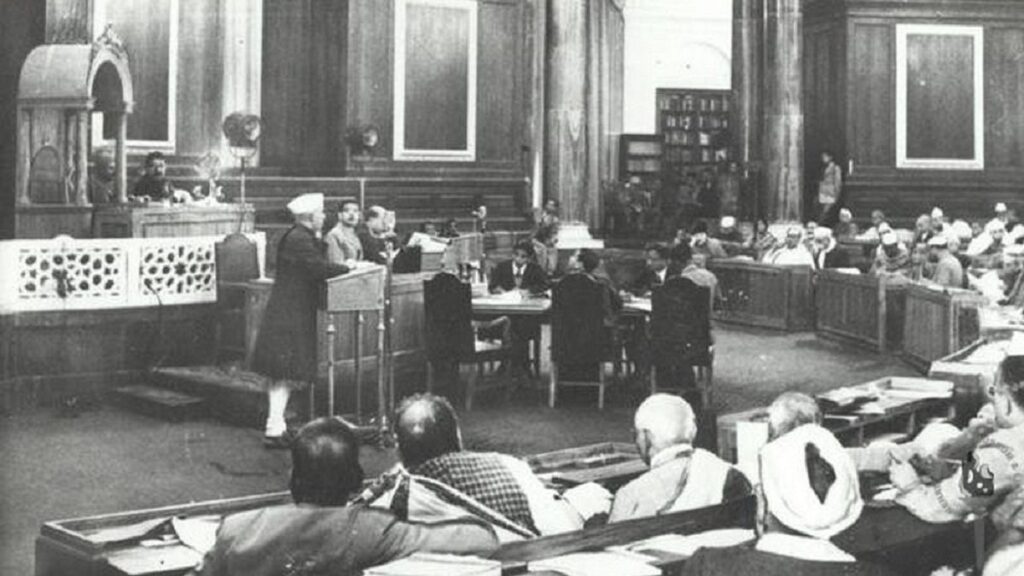
Which Language was the Constitution Originally Drafted in?
The original copies of the Indian Constitution were written in Hindi and English. Each member of the Constituent Assembly that drafted the Con-stitution, signed two copies of the Constitution, one in Hindi and the other in English.
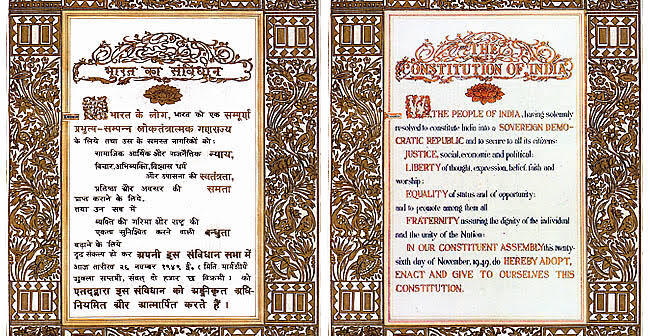
Interestingly, both the versions of the Constitution, Hindi and English, were handwritten. Each word was carefully calligraphed by Prem Behari Narain Raizada. Further, the Constitution has been beautifully illustrated by artist Nandalal Bose and his students.
Where was the Constitution Drafted?
The historic task of drafting the Constitution of India was undertaken in the Constitution Hall, which is now known as the Central Hall of Parliament House, New Delhi.

DID YOU KNOW?
Every word discussed and every document presented during this discussion in the Constituent Assembly is preserved in a document called “Constituent Assembly Debates”.
MN Roy was the first person to suggest the idea of establishing a Constituent Assembly in 1934.
DRAFTING OF THE INDIAN CONSTITUTION
Adoption of the Constitution of India
The Constitution of India was formally adopted by the Constituent Assembly on November 26, 1949 and was formally signed by the members of the Assembly on January 24, 1950. November 26th is known as the Constitution Day or the National Day and is celebrated to commemorate the adoption of the Constitution of India.

When Did The Constitution Come into force?
The Indian Constitution came into effect on January 26, 1950, when independent India declared itself as a Sovereign, Democratic and a Republic state. This day is observed as Republic Day. The date January 26 was chosen as this day is an important moment in the Indian nationalist move-ment. On January 26, 1930, the Indian National Congress, through the Declaration of Purna Swarai. passed a resolution demanding complete independence for the first time.
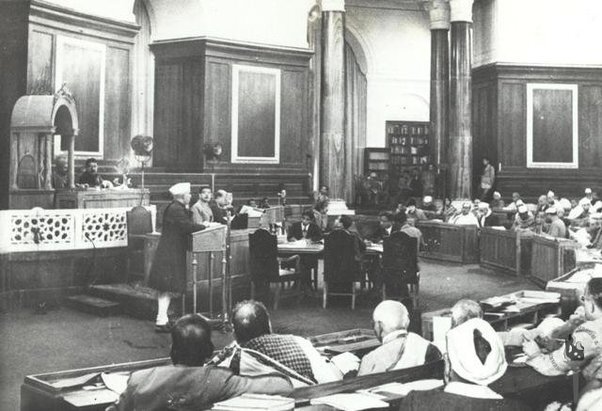
What Happened After the Constitution came into force?
After the Constitution of India came into force on January 26, 1950, the Constituent Assembly ceased to exist and transformed itself into the Provisional Parliament of India until a new Parliament was constituted in 1952.
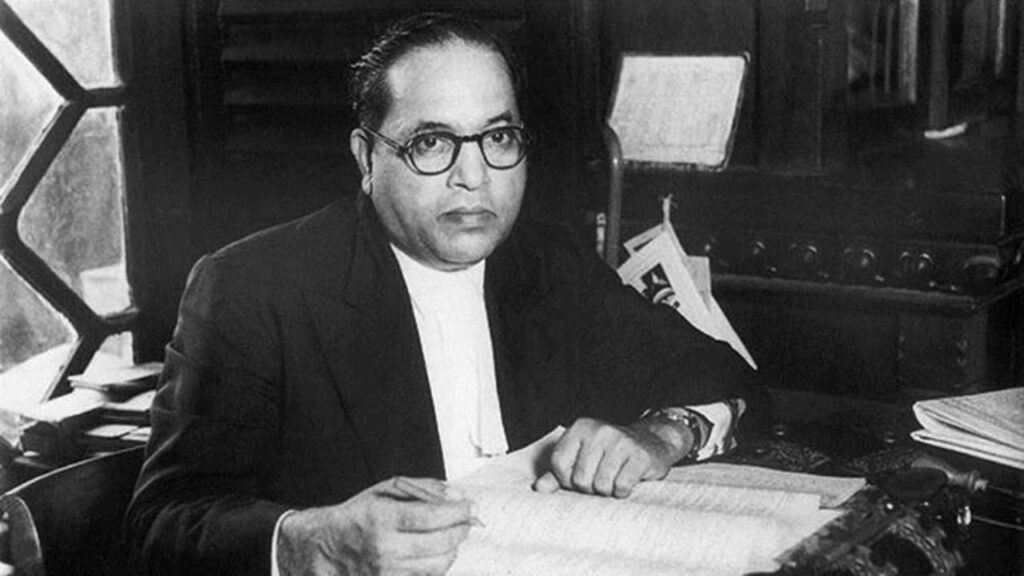
DID YOU KNOW?
1. When the country was divided into India and Pakistan, the Constituent Assembly was also divided into the Constituent Assembly of India and Pakistan.
2. Dr. B.R. Ambedkar is known as the ‘Father of the Indian Constitution’.
THE PREAMBLE
Indian Constitution is the largest written constitution in the world with 1,17,360 words (in the English version). The Preamble of the Constitution of India declares the country as a sovereign, socialist, secular and democratic republic and aims to secure justice, liberty, and equality for all citizens and promote fraternity to maintain the unity and integrity of the nation. The Preamble is the introduction to the Constitution, which provides the main features and ideas of India.
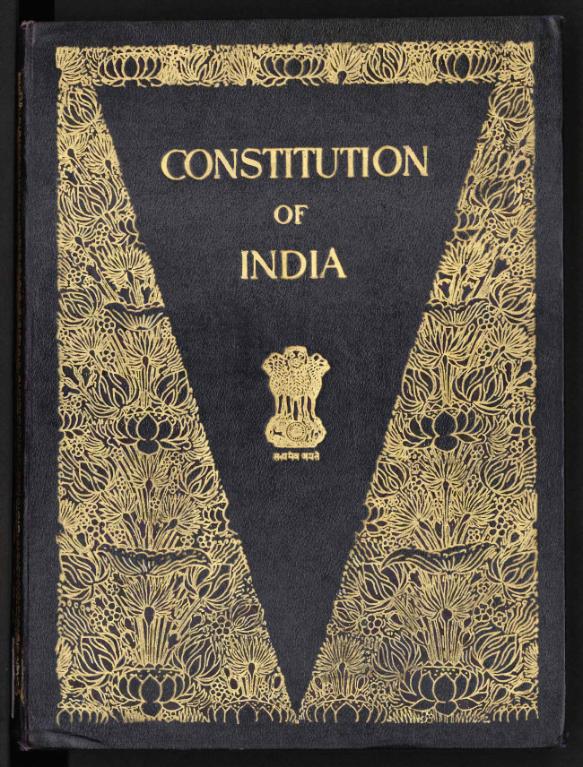
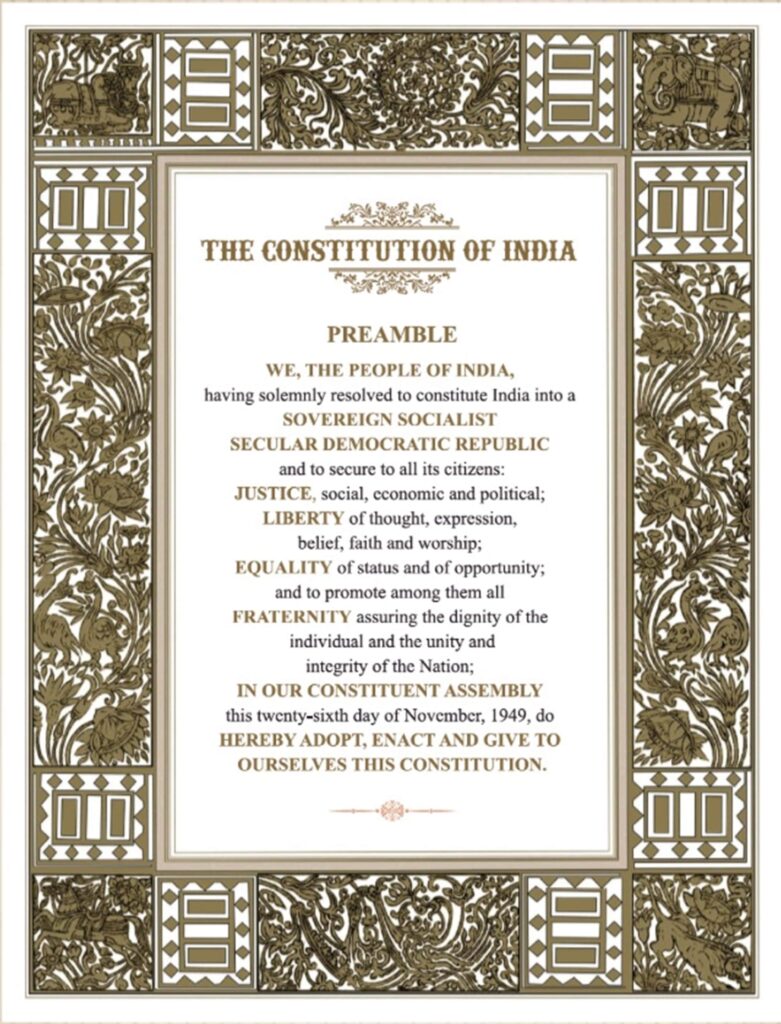
The ideals behind the Preamble to India’s Constitution were laid down by Jawaharlal Nehru’s Objectives Resolution, adopted by the Constituent Assembly on January 22, 1947.
DID YOU KNOW?
The original 1950 constitution is preserved in a helium-filled case at the Parliament House in New Delhi.
IMPORTANT GLOSSARY OF TERMS
CONSTITUTION
A Constitution is the fundamental and supreme law of any country. It is a rule book by which the government and citizens must abide. All laws of the country have to conform to the Constitution.
SECULAR
Citizens have complete freedom to follow any religion and people of all religions have equal rights. It also means that there is no national or state religion.
JUSTICE
No citizen can be discriminated against on the basis of caste, religion, and, or, gender. Government should work for the welfare of all.
SOVEREIGN
A sovereign state is one that can decide all its own policies. No other country can tell it what to do.
DEMOCRATIC
A form of government where people enjoy equal rights to elect their representatives and hold them accountable.
LIBERTY
There are no unreasonable restrictions on the citizens in what they think, how they wish to express their thoughts and the way they act.
SOCIALIST
Socialism has many different mean-ings. However, in the context of the Indian Constitution it means reducing inequalities in income and improving the lives of people.
REPUBLIC
A republic is a form of government in which the head of state is an elected person. Republics have elected presidents rather than kings and queens.
EQUALITY
All are equal before the law. The government has to ensure that everyone has equal opportunity and enjoy equal protection of law.
FRATERNITY
All of us should behave as if we are the members of the same family. No citizen should be treated as an inferior.
Also Watch Full Video On, FIFA World Cup Mascots

